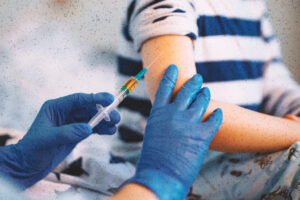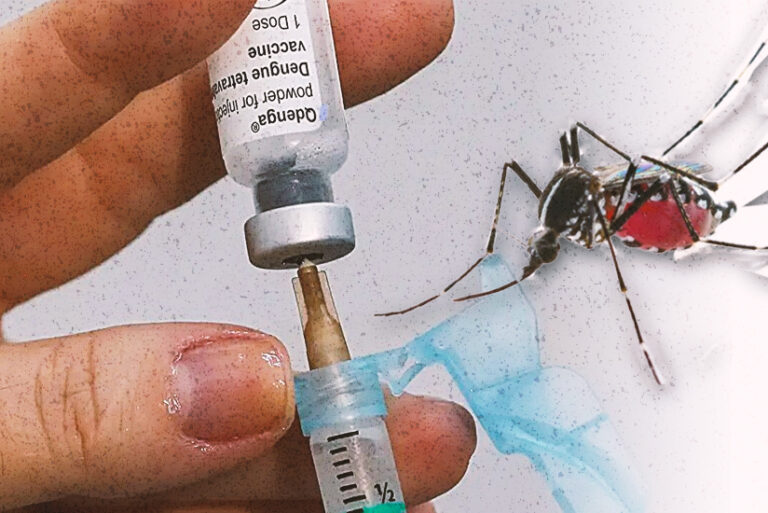Text and Photos by Henrylito D. Tacio
The Philippines – with a land area of 30 million hectares and comprises about 7,641 islands of which only 2,000 are inhabited – has 36,289 kilometers of coastlines (that is almost twice that of the United States).
It is no wonder why the country has the second highest number of seagrasses in the world. It has 18 species of sea grasses thriving along its coasts. Only Western Australia, with 30 species, has more than that total.
But what most Filipinos don’t know is that the Philippines is home to several seaweed species, of which only 893 species have been identified so far. A seaweed is not a seagrass nor it is a weed; it is actually marine algae.
“(The Philippines has) 197 species in 20 families for green algae, 153 species in 10 families for brown algae, and 543 species in 52 families for red algae,” said Dr. Marco Nemesio Montaño, of the Marine Science Institute of the University of the Philippines-Diliman, during a seminar on Enhancing Marine and Agricultural Products through Biotechnology some years back.
Seaweeds come in several forms, shapes and colors. Of over 9,000 species of seaweeds found all over the world, red tops with 6,000 species, followed by brown (2,000 species) and finally green (1,200 species).

Anti-cancer benefits
Now, the good news: Now, the good news: Perhaps not too many Filipinos know that certain species of seaweed thriving in the country’s water may have anti-cancer benefits. That’s according to the Department of Science and Technology (DOST).
“Researchers from the University of Santo Tomas found that polysaccharides extracted from Codium species, locally known as ‘pukpuklo’ (a seasonally-available seaweed), are effective against cancer cells and destructive enzymes associated with cancer metastasis,” said a press statement released by DOST.
The researchers, headed by Dr. Ross Dizon Vasquez, evaluated the inhibitory potential of the polysaccharide fractions isolated from Codium species. They found that “the seaweed fights destructive enzymes that aid metastasis or spread of cancer to different parts of the body.”
The research was conducted in October 2016 and ended in October 2018. The initial one-year research was funded by the National Research Council of the Philippines of the DOST. His graduate school advisors funded the extended one-year to repeat and include some tests for verification of the results.
The Codium species used in the study were collected in Ilocos Norte, Aklan, Iloilo, and Cagayan province; they were available seasonally from November to March. “Seaweeds are potential sources of bioactive/pharmacological compound, but studies on Philippine seaweeds as source of bioactive hit molecules for treatment of diseases are very few and limited,” explained Dr. Vasquez, who is with the mammalian tissue culture lab and pharmacology section of the Research Center for the Natural and Applied Sciences of UST.
On why “pukpuklo” was singled out, he said, “We chose it because there is no study yet on the polysaccharide content of this alga, even though it is a very popular delicacy in the northern parts of the country. It is an edible one, so there is no or less issue regarding the toxicity of the isolated compound.”
The polysaccharides (carbohydrates) were extracted using standard protocol for isolation of algal polysaccharides. That was the easier part. “The hardest part was the collection of Codium on their sites,” Dr. Vasquez recalled. “There were times that our search was futile because of their seasonality and location. The transport from the place where we collected the seaweeds to Manila was one of the biggest problems due to permit issues and policies in local airports.”
All those were part of the challenges the research team – which also included Ariane Marie G. Bayro and Mary Jho-Anne T. Corpuz – had to hurdle. What matters most was the result. “We are happy that we found something useful and relevant,” he said. “We are grateful that most people find the results interesting.”
Body beautiful
Now, if you want to have a voluptuous and healthy body – just like those of Pia Wurtzbach and Catriona Gray, the country’s two recent Miss Universe titleholders – you better start eating seaweeds, too.
The reason: Seaweeds contain fucoxanthin, a pharmacologically active carotenoid commonly distributed in brown algae, according to Dr. Montaño. Currently, the bioactive product is being developed into a slimming supplement or a drug that targets harmful fat.
During his lecture, Dr. Montaño said that in obese animals, the compound appeared to stimulate a protein called UCP1 “which causes fat to be broken down.” The pigment (in the form of fucoxanthinol), he further explained, also caused the liver to produce DHA, which can help cut levels of bad cholesterol associated with obesity and heart disease.
In a new human clinical trial, a patent-pending extract of fucoxanthin showed promising results for fat loss in humans. “By stimulating the expression of UCP-1 gene in white adipose tissues, fucoxanthin promotes thermogenesis (fat burning) in white fat cells. No jitters, loss of sleep, or stimulation side effects since the thermogenic effect is achieved without stimulating the central nervous system,” Dr. Montaño said.
Fucoxanthin also acts as an antioxidant and inhibits GOTO cells of neuroblastoma and colon cancer cells. It has beneficial effects on chemoprevention of cancer and also inhibited the development of intestinal carcinogenesis in animal experiments.
“Fucoxanthin induces apoptosis of human leukemia HL-60 cells and reduces viability of prostate cancer by inducing apoptosis,” Dr. Montaño said.
Against obesity
Another bioactive product present in seaweeds is fucoidan, sulfated polysaccharide from brown algae known for its ability to act as an anti-contraceptive and reduce cholesterol levels.
Fucoidan also has anti-cancer and anti-thrombotic traits and can also be used as an anti-tumor agent and against the white spot syndrome virus.
According to some studies, seaweed consumption reduces the risk of obesity by 43%, breast cancer by 58%, risk for type 2 diabetes and pre-diabetes (34% for men and 20% for women), and cardiovascular mortality by 27%.
Based on research, feasting on seaweeds can also lessen the risk of osteoporosis (a disease in which bone weakening increases the risk of a broken bone) by 78% and allergic rhinosinusitis (inflammation of the sinuses and nasal cavity) among pregnant women by 49%.
As seaweed is recognized as having some antioxidant elements, some scientists are trying to validate whether seaweed-based carrageenan powder as a blending agent on processed foods can fight cancer and other ailments.
Carageenan is the most known bioactive product sourced from seaweeds. It is a linear sulfated polysaccharide obtained from alkali extraction of red seaweeds like Kappaphycus spp., Eucheuma spp., and Halemynia sp.
Healthy contents
To those unfamiliar with its many uses, carageenan is commonly used as a thickener or stabilizer by the food industry and also used as a binding agent for domestic products such as toothpaste and shampoo and are found in selected pharmaceutical products.
In Davao del Sur, a report released by the Philippine News Agency (PNA) said that scientists from the Southern Philippines Agri-Business Marine and Aquatic School of Technology (SPAMAST) are working closely with members of the seaweed industry cluster in developing value-added products that use seaweed-based carrageenan powder on foods such as cakes, pastries, and “cured meat products” like sausages, hotdogs, and chorizos.
“We’re trying to make these products more nutritious by adding more vitamins – while blending them with carrageenan,” Dra. Jesebel Besas, a food scientist at SPAMAST, was quoted as saying.
One reason why they are focusing on seaweeds, it’s because of its medicinal properties. “It’s a real possibility that we’ll try to verify and validate at our laboratories – that blending seaweed powder in processed foods can fight cancer,” Dra. Besas pointed out.
As food, Wikipedia reports that seaweeds are consumed by coastal people, particularly in East Asia (Japan, China, Korea, Taiwan, Thailand, Cambodia, and Vietnam), and those living in Indonesia, Belize, Peru, Chile, Scandinavia, Ireland, Wales, the Philippines, and Scotland.
Among the 60 varieties found in the Philippines which are reportedly edible are gulamang dagat, gamet, pocpoclo, culot, lato, guso, barls-barls, bulaklak bato, and balbalolang. Some of these varieties can be processed into jams, jellies, candies, pickles, baby’s food, and gulaman bars.
Economic importance
Food from seaweed has become so popular that some entrepreneurs have come up with the seaweed noodles. It has become an instant hit not only in the Philippines but in other countries as well where there are Filipinos living. Some overseas Filipino workers are already bringing the product to the United States, Canada, and in the Middle East as “pasalubong” (gift upon one’s arrival).
The seaweed is first turned into a puree. Six liters of seaweed puree is mixed with a 25-kilo sack of flour. Generally, the shelf life of the noodles is six months. But recently, they managed to produce a seaweed noodle that has a one-year life, depending on the storage system.
“Many find it delicious by itself even if there aren’t lots of ingredients. And our noodles last a long time. You cook it now, and it won’t get spoiled until tomorrow,” pointed out Aida S. Andayog, manager of the Regional Fisheries Research and Development Center (RFRDC) in Bicol.
Bicol is the home of the National Seaweed Development Technology Center. Aside from seaweed noodles, the RFRDC has also produced value-added seaweed products like, pickles, nata de seaweed, seaweed candies, seaweed leche flan, marmalade or sandwich spread, seaweed lumpia, longganiza, and morcon.
Rich in vitamins and minerals
Nutrition-wise, what’s in seaweeds? Food experts classified seaweed as one of the richest plant sources of calcium. Its calcium content is typically about 4%-7% of dry matter. At seven percent calcium, one gram of dried seaweed provides 70 milligrams of calcium, compared to a daily dietary requirement of about 1,000 milligrams. Still, this is higher than a serving of most non-milk-based foods.
Protein content in seaweed varies somewhat, according to respected nutrition experts. It is low in brown algae at 5%-11% of dry matter, but comparable in quantitative terms to legumes at 30%-40% of dry matter in some species of red algae. Green algae also have significant protein content, that is, up to 20% of dry matter. Spirulina, a micro-alga, is well known for its very high content: 70% of dry matter.
Seaweed contains several vitamins. Red and brown algae are rich in carotenes and are used, in fact, as a source of natural mixed carotenes for dietary supplements. The content ranges from 20-170 parts per million. The vitamin C in red and brown algae is also notable, with contents ranging from 500-3000 parts per million. Other vitamins are also present, including B12, which is not found in most land plants.
Dr. Subhuti Dharmananda, director of the Institute for Traditional Medicine at Portland, Oregon, claims seaweed has very little fat, ranging from 1%-5% of dry matter, “although seaweed lipids have a higher proportion of essential fatty acids than land plants.” Green algae, whose fatty acid make-up is the closest to higher plants, have a much higher oleic and alpha-linoleic acid content.
Seaweed has high fiber content, making up 32%-50% of dry matter. The soluble fiber fraction accounts for 51%-56% of total fibers in green and red algae and for 67%-87% in brown algae. Soluble fibers are generally associated with having cholesterol-lowering and hypoglycemic effects. – ###








